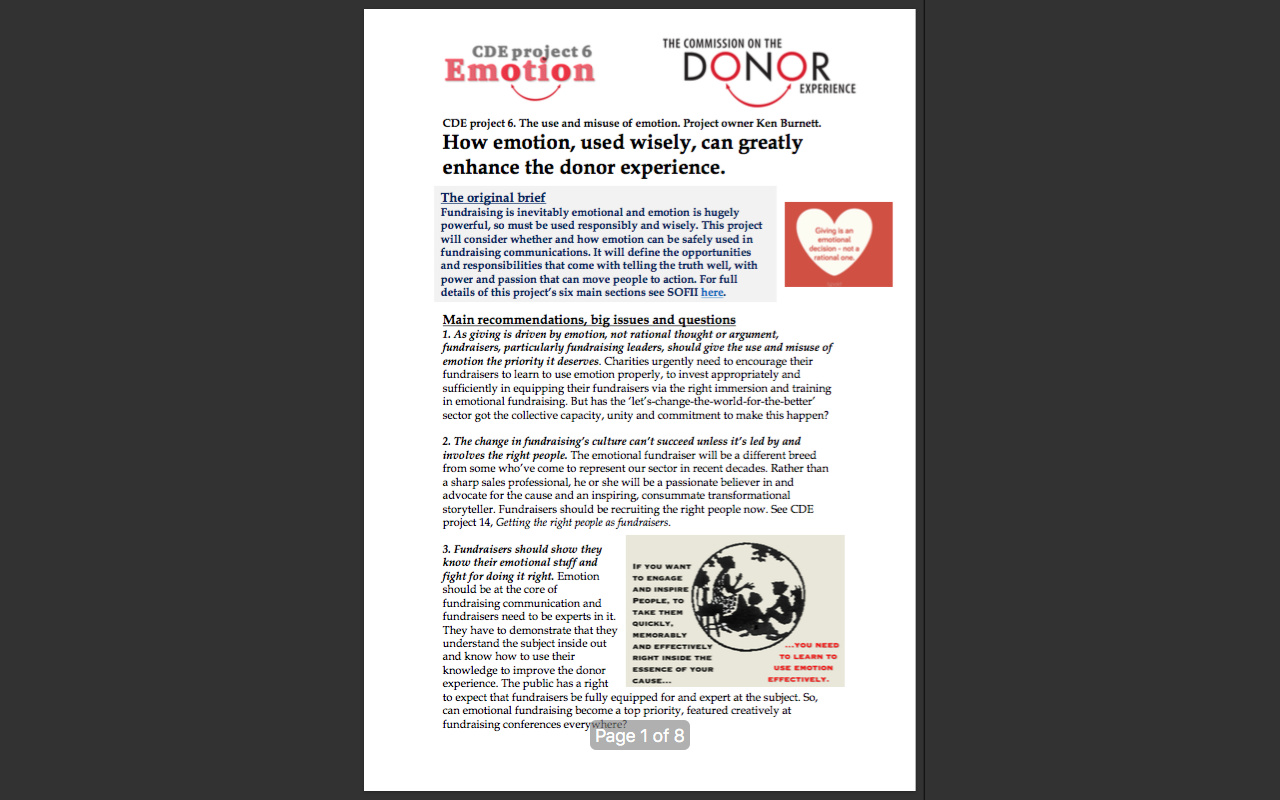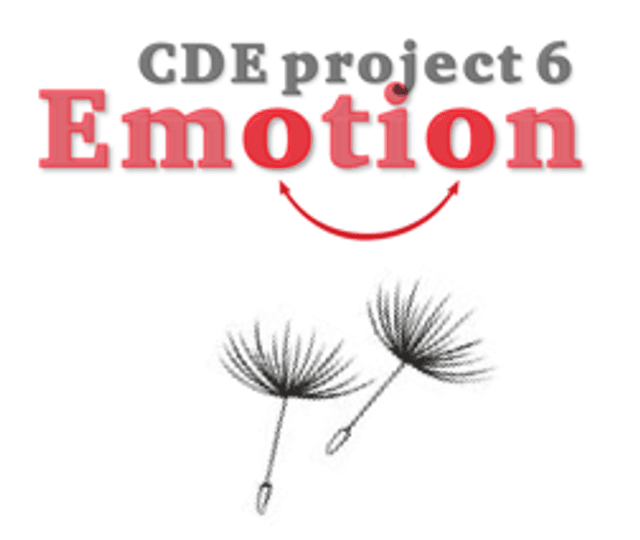CDE project 6 section 1a: summary
CDE project 6. The use and misuse of emotion.
- Written by
- The Commission on the Donor Experience
- Added
- May 31, 2017
Click here for the full contents, purpose and methodology.
How emotion, used wisely, can greatly enhance the donor experience.
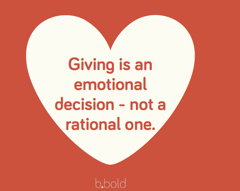
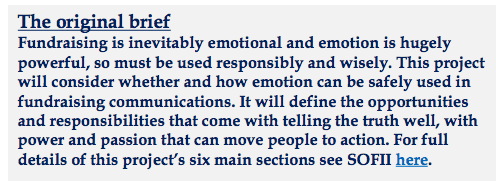
Main recommendations, big issues and questions
1. As giving is driven by emotion, not rational thought or argument, fundraisers, particularly fundraising leaders, should give the use and misuse of emotion the priority it deserves. Charities urgently need to encourage their fundraisers to learn to use emotion properly, to invest appropriately and sufficiently in equipping their fundraisers via the right immersion and training in emotional fundraising. But has the ‘let’s-change-the-world-for-the-better’ sector got the collective capacity, unity and commitment to make this happen?
2. The change in fundraising’s culture can’t succeed unless it’s led by and involves the right people. The emotional fundraiser will be a different breed from some who’ve come to represent our sector in recent decades. Rather than a sharp sales professional, he or she will be a passionate believer in and advocate for the cause and an inspiring, consummate transformational storyteller. Fundraisers should be recruiting the right people now. See CDE project 14, Getting the right people as fundraisers.

3. Fundraisers should show they know their emotional stuff and fight for doing it right. Emotion should be at the core of fundraising communication and fundraisers need to be experts in it. They have to demonstrate that they understand the subject inside out and know how to use their knowledge to improve the donor experience. The public has a right to expect that fundraisers be fully equipped for and expert at the subject. So, can emotional fundraising become a top priority, featured creatively at fundraising conferences everywhere?
4. Listen to the experts. And bring them in, to join us. The well-intentioned amateur must become a thing of the past. Fundraising campaigns and causes need to work with enthusiastic, appropriately qualified and donor-centred behavioural scientists with the skills, training and insights to lead fundraising into its donor-led, emotionally charged future.
5. Responsible use of emotions, always. Donors fear emotional manipulation from fundraisers, who therefore need to display evidence of consistent integrity in how they use images and stories, backed by understanding of the effects their use will have. It’s about the truth, told well, not how much more money this will raise. Misuse should not be tolerated. But, can fundraisers be trusted to do this right?
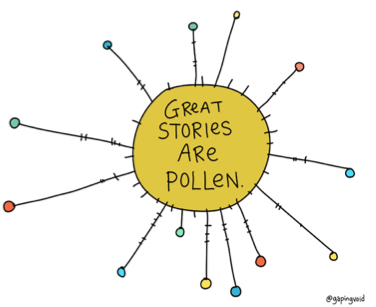
6. Fundraisers can and must shape public attitudes through emotional fundraising. It’s time fundraisers united to make the differences they want to see. Fundraising and campaign communicators can lead on big important issues, so influence rather than just raise funds for the changes society needs.
7. Fundraisers should show emotional intelligence, that they can deliver meaningful, emotional content that will reinforce donor loyalty and commitment – without spreading anxiety and discomfort. This is the big anxiety, from the donor’s point of view. Being a donor must always be a pleasure. Fundraisers have a duty to bring joy, meaning and fulfilment to their donors. They’ll not succeed at this unless they master emotional fundraising and do so in ways that their publics recognise, appreciate and respect. This project shows how this can be done.
What matters most in emotional fundraising?
- You. The key component in emotional fundraising is you. Be yourself.
- Be true, feel it and mean it. Show your passion proudly. Put donors rather than targets at the heart of your fundraising. Represent your donors steadfastly internally and externally. Create, project and protect the emotional experience you want your donors to have. Matthew Sherrington likens the ‘catching’ effect of emotion to yawning. When you find it in yourself and express it passionately, people will feel it.
- Think deeply and act wisely. Become expert at empathy and rapport and at delivering emotional reward for donors. Develop a new set of skills to match and master the potential of emotional fundraising.
- Never forget what donors really don’t like. The emotional fundraiser is never out of step or tune with his or her donors. Cultivate empathy and rapport, practice reciprocity built upon permanent, automatic sincerity and integrity, all wrapped genuinely and perpetually in appropriate emotional stories.
- Be the business area with the highest standards that always does the right thing not just by its donors and beneficiaries but also by its staff, volunteers and by all its publics. The fundraising sector has to lead the way in ethical business practices. It has to see its role is to make donors both happy and reassured.
- Listen well and keep learning. Be the best-informed emotional fundraiser of your generation. Make sure your organisation ‘gets’ emotional fundraising and so invests in it and develops its staff appropriately, consistently and well.
- Have real conversations. Scrap pre-set scripts and sales objectives to become a great emotional storyteller focused on donor delight, not financial target.

How to use this project, with links
For those keen to master emotional fundraising this project has six sections to help you to access all the content in CDE project 6, the use and misuse of emotion. To appreciate the foundations on which this summary’s conclusions are based please study all six sections, here. If your time is limited focus just on this summary, the introduction and section 6 (which also includes the points in this summary, slightly expanded and ordered differently).
- For a broad introduction to the project and some of its key conclusions, see the contents and summary, here and section 1, the introduction, here.
- For examples of emotional communications and something about their structure and design see section 2, the showcase of emotional fundraising, here.
- For a deeper understanding of what emotions are and how they work you need section 3, the science of emotions, see here.
- For insights into how donors perceive and interact with emotions, see the individual components of section 4, donors and emotions, here.
- For more on the art and craft of inspiration and how emotions can help you in your fundraising see the contributions that form section 5, the creative use of emotion, here.
- For convenience, the 72 key points drawn from all the above content are listed below.
- For a view of the future development and direction of this crucial subject for fundraisers see the shape of emotional fundraising 2017, here.
72 key points and helpful hints for fundraisers, from this project
Collectively these will answer the question, ‘What do I and my colleagues need to do to be the best that my charity can be, in this area?’ They’re grouped under four headings: fundamentals of emotional fundraising, communication and inspiration, the power of emotion and the right people, doing the right things by donors. These are somewhat arbitrary, so inevitably there’s some overlap.
Please note: These 72 points have been edited or précised from the 30+ components that form the main content of CDE project 6. Text in quotes indicates something taken from one of the 27 contributors. Care has been taken to preserve meanings but lack of space in the summary prevents full attribution of the quotes here. A list of contributors can be found in the contents list and in the introduction and all quotes are attributed in section 6, where an unedited version of the 72 points is also included.

- ‘Emotion plus integrity equals great fundraising.’ For fundraisers integrity is essential, not optional.
- The concept of ‘the truth, told well’ should run through the DNA of every donor-focused fundraiser.
- Emotional leadership built around a great WHY can transform both the donor experience and the fundraiser experience.
- You’ll know you are donor-centric when you stop saying, ‘we do this’ and start saying ‘this is what you make possible’.
- ‘People don’t necessarily give where the need is highest, but give instead where they have an emotional connection.’
- ‘It is stories and their emotional content that activate the predisposition to donate, not creative messages, statistics, the brand, or the logo.’
- ‘If you try to shock for the sake of it people see through it. If what you say shocks and is based on honesty and truth, it rises above.’
- ‘We will fail if we are not prepared to get it wrong.’
- ‘Articulating the difference a supporter can make is as crucial as the emotional story itself. ‘We must understand our message and our audience and have the courage to tell the truth, however painful and uncomfortable.’
- ‘We must understand our message and our audience and have the courage to tell the truth, however painful and uncomfortable.’
- Fundraisers have to get better at inspiring. Powerful, truthful emotional content will engage and bind donors willingly to your cause, giving them as much in return as you ask from them, in regular or single-gift support.
- The impact of a donor’s gift is perhaps the best emotional story you’ll ever get to tell. Fundraisers have to tell it unhesitatingly, well and often.

- ‘Information is putting out, communication is getting through’. Most organisations produce too much information, too little communication.
- Make the case for support short, perfect, unarguable and available, but not prominent. Keep it subordinate to your great big emotional WHY.
- Though our sector has yet to realise it, logical rational analysis is more likely to cause donors to stop giving rather than encourage them to start.
- Charities spend too much effort explaining what they do in charts, diagrams, statistics and dense text. Better to focus on emotional stories about what their donors enable them to do.
- Pursue the policy of ‘5 Fs’ – be famous for frequent, fast, fabulous feedback.
- ‘The big problem for hospices is being so scared of misusing emotion that they shy away from telling the truth in the first place.’
- Fundraisers should be storytellers rather than salespeople. HR people should focus on communications skills ahead of marketing qualifications.
- ‘Personal stories are priceless, feedback is vital and thank you goes a long way. Listen well and celebrate what we have achieved together. ‘
- Donors want plain, straightforward writing. Competence, not cleverness. They want the deeply moving and the essentially true.

- Start an online story bank. Promoting it widely and make sure it’s used.
- Keep it simple. Resist the sterile reporting favoured by NGOs. Use the plain conversational language that people hear every day.
- Because we have to tell our stories well to passionately move people to action, we need to know that comfortable people tend to do nothing.
- ‘Photos of sad kids raise 50 per cent more than photos of either happy kids or neutral kids.’ Worth knowing, that is.
- ‘Communications that create fear and anger will drive action, but long-term commitment requires potent means to tackle these negative emotions.’
- ‘People are more likely to be persuaded by those who make them feel good about giving. Endorsements from people they trust can be powerful.’
- ‘Generating guilt is a short-term strategy. Guilt initially makes people feel sad which they resolve by giving. But this turns to anger if over-used.’
- Fundraisers need to learn the art and craft of writing drama.
- Bring the problem close to home. ‘One needy individual next door = 100 needy people in Manchester = 1,000 needy people in Madagascar.’
- ‘People are willing to go beyond reality for entertainment, though seem less likely to take anything from charities but the whole truth, nothing but.’
- ‘No fundraiser should ever face having nothing to say. This happens when a charity is driven by a window of opportunity, such as a deadline.’
- ‘We should try harder to get our beneficiaries to speak directly to our supporters. Beneficiaries are authentic experts who people will listen to.’
- ‘Donors give money to make the world better - we just enable that to happen.’ No one gives for things to remain as they are.
- ‘The most effective stories that we have at the hospice have been those told by families in their own words.’
- ‘It’s not our job to whisper to our donors …did you give that donation because you understand the root causes of poverty? Or did you just feel your heart go out to a helpless little child?’
- ‘Was I objectifying him? Was I using his looks to attract support and generate extra cash? Well, yes. Does that make me a bad person? No!’
- ‘Fundraisers must bear witness so the truth can be told, for people who may never have seen a refugee camp, never sat next to a woman whose child is dying in her arms….’
- Sometimes it’s possible to capture your WHY in a single phrase or sentence. See the starfish story in section 5.2.
- ‘A strong emotional experience stays in the memory and influences later behaviour.’ Emotional fundraising is no less than the route to retention.
- Finding your organisation’s WHY is about ‘wow!’ rather than ‘so what?’ It shows that people don’t buy what you do, they buy why you do it.
- ‘Emotional connection is essential to any successful fundraising programme.’
- Emotional fundraising is healing and very unifying. Nothing unites fundraisers and donors more than a strong, compelling emotional WHY.
- ‘Just six core emotions, and only these six, are those that really matter in activating people and igniting behaviour such as the action of donating.’
- ‘The key for a healthy and long-term sustainable relationship with donors is emotionally satisfied donors – more valuable than rationally satisfied.’
- Emotions associated with bad service can last significantly longer than emotions we would associate with great wow moments.
- ‘The mere act of helping produces an inner satisfaction, a sense of ‘warm glow’. The knowledge that your donation has had an impact, that it changed a person’s life, is what transforms this to happiness.’
- ‘Donations to a collection tin went up 14 per cent when the word ‘helping’ was added but shot up 90 per cent when that was changed to ‘loving’.
- Consider adopting the slogan, ‘Donors do make a difference’. Then commit all your people to collecting and crafting stories that prove the point. When you’ve done that, try the same idea with ‘the joy of giving’.
‘Using negative emotions such as guilt doesn’t encourage long-term giving. Instead it is ‘reward emotions’, that enable people to enjoy giving and therefore provide the encouragement to do so. The mistake charities make is that they keep going out with the need emotion because it works short-term, but they don’t put enough emphasis on the reward emotions.

- Charities should develop, publish and live by their own tailor-made covenant with donors. See https://goo.gl/3qEX5I for suggestions.
- ‘Stop treating all people the same. For outstanding donor experiences, start seeing donors as people rather than trying to fit them into categories.
- ‘Listen to donors, they all have a different emotional reason for giving. There’s no script for life, so conversations shouldn’t be scripted either.’
- ’Put the feeling into your fundraising and asking for money is the last thing you’ll do.’
- ‘Investing in the people who actually speak with your supporters is crucial. If you aren’t you’re not investing in the best experience for donors.’
- You have to be the change you want to see. Remember these ten two-letter words – ‘if it is to be, it is up to me.’
- Charities need to work hard at making their board of trustees an emotional board.
- A brilliant creative communicator excels at times of change. When everything’s steady or settled an efficient but stable manager will be better.
- Stand up if you’re a fundraiser! ‘It should be about everybody feeling they have a role, that fundraising is right at the heart of the organisation.’
- ‘Bridging the empathy gap could be effectively achieved through a coalition of organisations jointly promoting a campaign or giving vehicle.’
- Ask yourself what you can do to become a more emotionally intelligent fundraiser, a more open hearted leader’.
- Fundraisers in public places should have a sign on their backs saying, ‘How’s my fundraising?’ with a number to call. Just like HGVs and trucks would sport a sign saying, ‘How’s my driving?’ Donors would love this.
- ‘People want to feel good about giving, to know they’ve made the right choice, that they are recognised and connected to like-minded people.’
- ‘People often give to prove they are ‘good’. Do not confuse this desire to look and feel good with connection to a cause.
- ‘The thank you is the key part of any fundraising programme. If the recruitment device is the ‘box’, the thank you piece is what’s inside.
- ‘Poor treatment such as getting someone’s name wrong impacts on a donor’s self-worth. Thinking they don’t matter creates negative thoughts.
- ‘Avoid donor regret (giving remorse) by addressing donor needs after a donation.
- ‘When someone appears unsure about giving it is because they don’t feel emotionally close enough to give.
- ‘When donors first give, make the charity accessible to them. Welcome and reward curiosity.’
- To help turn your board of trustees into an emotional board 1) start each meeting with a mission story, 2) set up a ‘guest at table’ scheme, 3) encourage trustees to visit projects and on return get them to tell an emotional story, and 4) decorate your walls and any other available space with emotional images and captions that tell your cause’s story. If your board members aren’t natural storytellers, train them.
- ‘We need to give our donors an emotional journey, simply and honestly told, to help them understand why a hospice contains a million emotions but above all is a place where hope can thrive.
Think big/inspire before asking. ‘We said we weren’t there to talk about money...’ See how a $27.1m gift was secured from a bankrupt prospect through the judicious use of just the right amount of emotion.
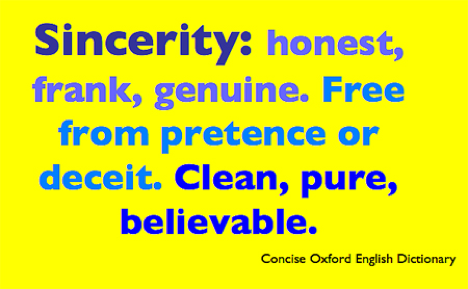
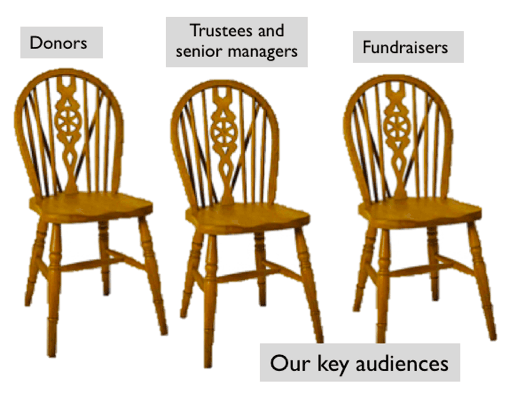
For senior management and trustee boards, this project will
- Show why emotion is at the heart of fundraising and why fundraisers should understand and use it responsibly and effectively, to improve their donors’ experience.
- Help their understanding of why and how fundraisers use storytelling and why they tell their stories in the way they do, to better engage, inspire and delight donors.
- Explain the benefits that will follow when their charity begins to tell its stories better.
- Show how it will repay investment to equip staff properly in emotional storytelling.
- Show why their fundraisers should embrace the 5Fs and be famous for frequent, fast, fabulous feedback.
- Help the charity’s leadership to become an emotional board.
- Introduce them to a range of inspirational aspects of the use of emotion.
- Help them to recognise and avoid misuse of emotion in their organisation’s communications.
For donors, this project will
- Increase the care, comprehension and competence that fundraisers will bring to their job of communicating with donors.
- Increase opportunities for donors to be inspired, engaged and entertained when they hear from a charity, with more appropriate and better presented content.
- Reassure donors that, when they hear from fundraisers, their best interests will be at the heart of each contact.
- Reduce the chances of donors being made uncomfortable by the misuse of emotional messaging.
- Help to improve the content of each communication that they receive.

Ken Burnett,
April 2017


